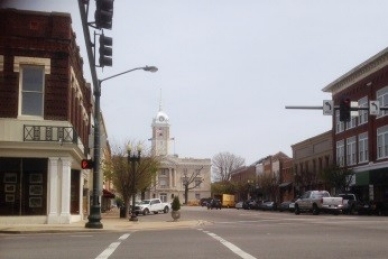Land Use
How we use and design our land has direct and indirect impacts on our health. Check out the panels below to learn more about how land use impacts our health, and check out the Urban Land Institute's Call To Action to learn more about ways we can promote healthy communities.

Placemaking
Placemaking is an approach to planning, designing, building and maintaining public spaces in a way that focuses around the people that use and benefit from the space. Placemaking is more than just building, it includes paying attention to the physical, cultural and social identity of a place. For many communities, placemaking has been a way to reimagine and renovate their public places. Placemaking can empower communities to create a sense of belonging and lead to community pride. Placemaking is another way to build environments that benefit health and well-being.

Planning
Planning determines the way land is used, protected and designed. Planning is done by states, regions, counties, cities and towns at all scales, including urban, suburban and rural. Planning considers the positive and negative impacts of land use changes on people, infrastructure, the environment and budgets. Planning can ensure that places grow in ways that preserve quality of life, promote environmental sustainability, build community and encourage a healthy lifestyle. Examples include zoning and land use, environmental planning, transportation planning and parks and greenspace planning.

Development
Development is the altering of land. Examples of development are changing land from its natural state for use as farmland, a shopping mall or a subdivision. In some places, such as urban areas, planning or zoning guides development. In some places, typically rural areas, there are few checks or balances on development. Development and redevelopment can improve health outcomes and livability.

Downtowns
Downtowns have been called the heart of a community. Downtowns are the traditional business districts where it all got started many years ago. Most downtowns even have a “Main Street” recognizing the place as special and unique. In addition to buildings, downtowns have their own history, stories and people. Together these elements combine to form a unique place rich with character. Downtowns have historic, cultural and architectural resources to local enterprises and community pride. Focusing on downtowns can be beneficial for economic and community development as well as physical activity.

Neighborhoods
Healthy neighborhoods have been shown to improve the quality of people’s lives. Neighborhoods can strengthen the social and economic well-being of people that live in them. Organized neighborhoods are better able to response to community needs. Neighborhoods can thrive through more informed and involved citizens. Improving the safety and health of homes revitalizes a community. Safe and accessible neighborhoods have infrastructure like roadways, bike paths, green space and sidewalks that improve the quality and appearance of the neighborhood as well as improve connectivity to people, recreation and jobs. Healthy neighborhoods help to increase home values, market the community, create high standards for property improvements and forge strong connections among neighbors.

Rural Areas
The areas located outside of cities and towns are termed “rural”. Rural areas have low population density. Rural areas often have a lot of undeveloped land, farmland or forest. Most of the land area in Tennessee is rural. Based on the 2010 Census, 93% of Tennessee is rural. Some 70 of 95 counties had at least 50% of their residents living in the 38,330 square miles of rural Tennessee. People in rural areas have unique differences and challenges when it comes to economic and community development and health. Rural areas often have fewer service providers and resources for jobs, health care and community services.

Suburban Areas
Suburban areas are lower density areas that separate residential and commercial areas from one another. They are either part of a city or urban area, or exist as a separate residential community within commuting distance of a city. As cars became the dominant way for people to get to work, suburbs grew. Tennessee is rich in suburban communities, each with their own successes and struggles at mixing development and health.

Urban Areas
Two out of three Tennesseans live in an urban area. Urban areas are locations with high population density. Urban areas are in cities and towns. An urban area is often the main area of employment. Urban areas have the most human-built structures. This built environment creates opportunities for health such as sidewalks and public transit. The built environment also creates challenges to health such as sedentary commuting and air quality. Many urban areas and their nearby communities that are socio-economically connected are grouped together into metropolitan areas.